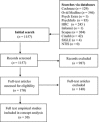Burden of treatment for chronic illness: a concept analysis and review of the literature
- PMID: 23363080
- PMCID: PMC5060781
- DOI: 10.1111/hex.12046
Burden of treatment for chronic illness: a concept analysis and review of the literature
Abstract
Context: Treatment burden, the burden associated with the treatment and management of chronic illness, has not yet been well articulated.
Objective: Using Rodgers' (1989, Journal of Advanced Nursing, 14, 330-335) method of concept analysis, this review describes the ways in which treatment burden has been conceptualized to define the concept and to develop a framework for understanding its attributes, antecedents and consequences.
Methods: Leading databases were searched electronically between the years 2002 and 2011. To ensure the review focused on actual observations of the concept of interest, articles that did not measure treatment burden (either qualitatively or quantitatively) were excluded. An inductive approach was used to identify themes related to the concept of treatment burden.
Main results: Thirty articles, identified from 1557 abstracts, were included in the review. The attributes of treatment burden include burden as a dynamic process, as a multidimensional concept, and comprising of both subjective and objective elements. Prominent predisposing factors (antecedents) include the person's age and gender, their family circumstances, possible comorbidity, high use of medications, characteristics of treatment and their relationship with their health-care provider. The most dominant consequences are poor health and well-being, non-adherence to treatment, ineffective resource use and burden on significant others. Furthermore, many of these consequences can also become antecedents, reflecting the cyclic and dynamic nature of treatment burden.
Conclusion: The findings underscore the need for researchers and health-care professionals to engage in collaborative discussions and make cooperative efforts to help alleviate treatment burden and tailor treatment regimens to the realities of people's daily lives.
Keywords: chronic illness; concept analysis; health professional; medication burden; treatment burden.
© 2013 Blackwell Publishing Ltd.
Figures
References
-
- Alwan A, Armstrong T, Cowan M, Riley L. Noncommunicable Diseases Country Profiles 2011. Geneva, Switzerland: World Health Organization, 2011.
-
- Gapstur RL. Symptom burden: a concept analysis and implications for oncology nurses. Oncology Nursing Forum, 2007; 34: 673–680. - PubMed
-
- Australian Institute of Health and Welfare . Australia's Health, 2010. Australia's Health Series No. 12. Cat. No. AUS 122. In: Australian Institute of Health and Welfare, ed. Canberra: Commonwealth of Australia, 2010.
-
- Anderson RT, Skovlund SE, Marrero D et al Development and validation of the insulin treatment satisfaction questionnaire. Clinicial Therapeutics, 2004; 26: 565–578. - PubMed
Publication types
MeSH terms
LinkOut - more resources
Full Text Sources
Other Literature Sources
Medical



